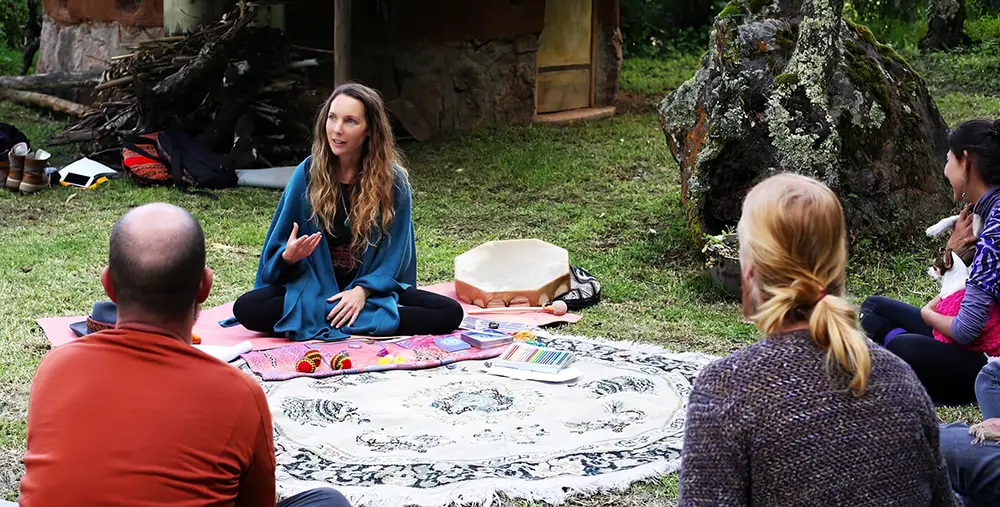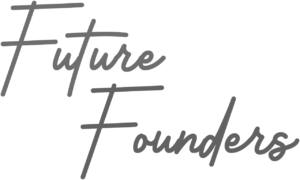
Understanding the Role of an Inner Child Healing Practitioner
Inner child healing is a deeply transformative process that invites individuals to reconnect with parts of themselves that were wounded during their formative years. These early wounds—often stemming from neglect, unmet needs, emotional trauma, or even subtle forms of rejection—tend to shape how people respond to challenges, relationships, and self-worth in adulthood. Inner Child Healing Practitioners serve as compassionate guides who help clients identify these hidden injuries and lovingly reparent themselves to restore emotional harmony. Practitioners use a combination of therapeutic conversation, somatic practices, visualization, and compassionate listening to create breakthroughs in emotional awareness.
Clients often enter this work unaware of how their unresolved childhood experiences impact their adult lives, manifesting as anxiety, people-pleasing, relationship struggles, or chronic self-doubt. The role of the practitioner is to gently help clients access buried emotions and reframe old beliefs into empowering perspectives. This type of support demands more than knowledge—it requires presence, empathy, and an ability to hold safe space. Certified professionals are trained not just in methods, but in embodying the emotional depth needed for this transformative healing work. The impact of this work can be both profound and long-lasting, helping individuals reclaim their authentic selves.
What Sets the Certified Inner Child Healing Practitioner Program Apart
This certification program is more than theoretical learning—it’s an immersive experience rooted in emotional intelligence, neuroscience, and practical tools. Participants are introduced to a structured yet flexible curriculum designed to develop both personal insight and professional skill. The course integrates evidence-based techniques such as parts work, inner dialogue, emotional regulation tools, somatic exercises, and trauma-informed practices. Through guided instruction, group learning, and mentorship, practitioners are taught how to safely support clients navigating emotionally sensitive material.
A key feature of this program is its experiential learning approach. Each module includes reflective exercises, peer practice, and real-time facilitation opportunities, allowing students to deeply internalize the methods they’ll use in client sessions. The certification also focuses heavily on ethical conduct, grounding techniques, and the importance of creating non-judgmental, culturally sensitive environments. Whether you’re joining with a background in mental health or as a healing arts practitioner, the program is designed to meet you where you are and build your confidence in this nuanced space.
It also offers flexibility for adult learners—most programs can be completed online through live or recorded sessions, allowing participants to learn at their own pace without sacrificing depth. Certification requirements are clear and attainable, ensuring you walk away fully equipped to begin your practice. The training isn’t about offering quick fixes—it’s about cultivating the patience, presence, and practices needed for real inner transformation.
Skills and Tools You’ll Gain as a Certified Practitioner
Participants in the Certified Inner Child Healing Practitioner Program are trained in a wide array of skills that are both practical and profound. At the heart of the training lies emotional literacy—the ability to name, track, and support a range of emotions as they arise. This allows practitioners to guide their clients through layers of emotional suppression, helping them access repressed feelings and integrate those experiences without overwhelm. Techniques such as reparenting exercises, inner child dialogues, and visualization journeys are central to this work.
The curriculum also covers key trauma-informed practices such as nervous system regulation, setting and maintaining boundaries, and pacing deep emotional work in a way that keeps clients safe. Practitioners are taught how to spot trauma triggers and respond with grounding strategies that prevent emotional flooding. You’ll also learn how to help clients build self-compassion, establish a secure internal foundation, and recognize inner patterns such as self-sabotage or perfectionism that stem from unmet childhood needs.
Somatic techniques such as breathwork, body scanning, and tension release are also integrated into the program, ensuring that clients are not only processing cognitively but healing at a nervous system level. This dual approach—emotional and physical—deepens the efficacy of inner child healing. By graduation, practitioners are not just skilled facilitators; they become emotionally attuned guides who can hold transformative space for others with clarity and care.
How This Certification Supports Personal Healing and Professional Growth
One of the most impactful aspects of this certification is that it invites practitioners to first turn inward. You cannot guide others through inner child healing without addressing your own. Participants are encouraged to work through their personal emotional patterns, revisit formative experiences, and connect to their own inner child in order to develop self-awareness and authenticity. This inner work forms the foundation for a practitioner’s capacity to truly empathize with and hold space for clients.
As the training progresses, students often report enhanced emotional intelligence, stronger boundaries, greater self-trust, and a renewed connection to their life purpose. This growth naturally translates into the professional realm. Practitioners who complete the program are seen as more grounded, sensitive, and equipped to deal with complex emotional dynamics. Whether you’re looking to start a private practice, add to your current offerings, or integrate healing work into your community, the certification provides the credibility and depth you need.
The program also empowers participants to shift from being emotional caretakers to empowered guides. You’ll learn how to support without rescuing, how to challenge without criticizing, and how to model emotional resilience. Personal healing and professional growth become inseparable, creating practitioners who not only understand the theory but embody the work. This embodied presence makes a lasting impact on the lives of those they serve.
Ideal Candidates for the Certified Inner Child Healing Practitioner Program
This program is designed for those who are drawn to emotional healing, whether for personal transformation, professional development, or both. Mental health professionals such as therapists and counselors will find that inner child work adds depth and nuance to their therapeutic approach. Coaches and holistic healers can incorporate this modality to support clients in uncovering and shifting limiting beliefs rooted in childhood experiences. Teachers, social workers, and community leaders can benefit from learning trauma-sensitive communication and emotional support tools.
You don’t need formal credentials in psychology to join. Many students come from non-clinical backgrounds—life coaches, yoga teachers, energy workers, or individuals on a personal healing journey. What they all have in common is a deep desire to understand themselves and support others. If you’ve ever been the “emotional anchor” in your relationships or felt called to help others find peace, this program offers the skills and structure to channel that passion into effective service.
What matters most is your readiness to explore your own emotional world and your willingness to develop the skills needed to hold space for others. Emotional maturity, curiosity, and a compassionate mindset are more important than prior experience. If you’ve felt the calling to turn pain into purpose, this path may be the perfect next step.
Career Opportunities and Client Impact
Graduates of the Certified Inner Child Healing Practitioner Program have a wide range of career opportunities. Many choose to start their own private practice, offering 1:1 healing sessions that help clients address trauma, increase self-worth, and create emotionally fulfilling lives. Others integrate inner child work into existing practices—life coaching, somatic healing, Reiki, counseling, or spiritual mentorship—enhancing their ability to support deeper transformation.
Some practitioners host workshops, retreats, or group circles focused on emotional healing, parenting the inner child, or reclaiming one’s voice. Others partner with schools, wellness centers, or community organizations to bring emotional education and trauma recovery to broader audiences. This work is increasingly in demand, as more people seek alternatives to traditional talk therapy and desire holistic approaches that treat emotional wounds at the root.
The ripple effect of this work is powerful. Clients experience breakthroughs in self-awareness, healthier relationships, and renewed purpose. As a practitioner, you’re not just facilitating healing—you’re helping people rewrite the scripts that have silently shaped their lives. You become a guide who models presence, care, and emotional freedom, creating safer communities in the process.
What to Expect During and After the Certification Process
Expect a curriculum that combines both structure and depth. Most Certified Inner Child Healing Practitioner Programs offer several modules delivered over the course of a few weeks or months, depending on whether you choose a self-paced or live format. Modules typically cover theoretical frameworks, client facilitation techniques, guided practices, peer support sessions, and supervised practicums.
Interactive learning is emphasized—students participate in live classes, receive feedback from mentors, and engage in real-time practice with fellow trainees. Reflection journals, guided inner work, and recorded lessons are all included to support integration. Final certification usually requires completion of all coursework, a practical demonstration, and submission of client case notes or supervised sessions.
After completion, practitioners often receive lifetime access to course materials, continuing education opportunities, and invitations to advanced training. Some programs include business coaching, helping you set up your practice, build a client base, and create a sustainable income stream. Most importantly, you emerge with the confidence and credibility to serve your clients with depth and integrity.
Choosing the Right Program Provider: What to Look For
When selecting a Certified Inner Child Healing Practitioner Program, consider more than just price or schedule. Look for programs that are grounded in trauma-informed education and delivered by experienced faculty who actively practice what they teach. A strong program will include both theoretical instruction and practical tools that are relevant to real-world client work.
Investigate whether the program is backed by recognized certifications or has partnerships with coaching or therapy organizations. Read reviews from past students and explore how the training has been integrated into professional work. Ensure that there is adequate support—through mentorship, peer learning, or alumni forums—so you’re not learning in isolation.
Another important factor is whether the program honors diversity and cultural sensitivity. Inner child work often intersects with deeply personal experiences related to identity, family dynamics, and societal systems. A credible provider will include frameworks that acknowledge this complexity. Trust your intuition and take time to choose a program that aligns with your values and vision.
Frequently Asked Questions (FAQ)
Q1: Do I need a background in therapy or coaching to enroll?
No. While the program welcomes mental health professionals, it is also accessible to those with no prior experience. What’s most important is a strong interest in emotional healing and a willingness to learn.
Q2: How long does the certification program take to complete?
Most programs range from 6 to 12 weeks, depending on the format and pace you choose. Some are self-paced with lifetime access, while others offer structured weekly modules.
Q3: Is this certification internationally recognized?
Many programs are internationally recognized or affiliated with coaching or healing organizations. Always check the provider’s accreditation and whether the certification is accepted in your region or field.
Q4: What kind of support will I get during the program?
Students typically receive access to mentors, peer discussion groups, live Q&A sessions, and resource libraries. Some programs also offer 1:1 guidance or business-building tools.
Q5: Can I start working with clients right after certification?
Yes, provided you feel ready and have completed the program requirements. Many graduates begin offering 1:1 sessions or group workshops shortly after certification.
Q6: Is there a community or alumni group for certified practitioners?
Most programs provide ongoing access to alumni communities where you can continue learning, ask questions, and collaborate with fellow practitioners.
